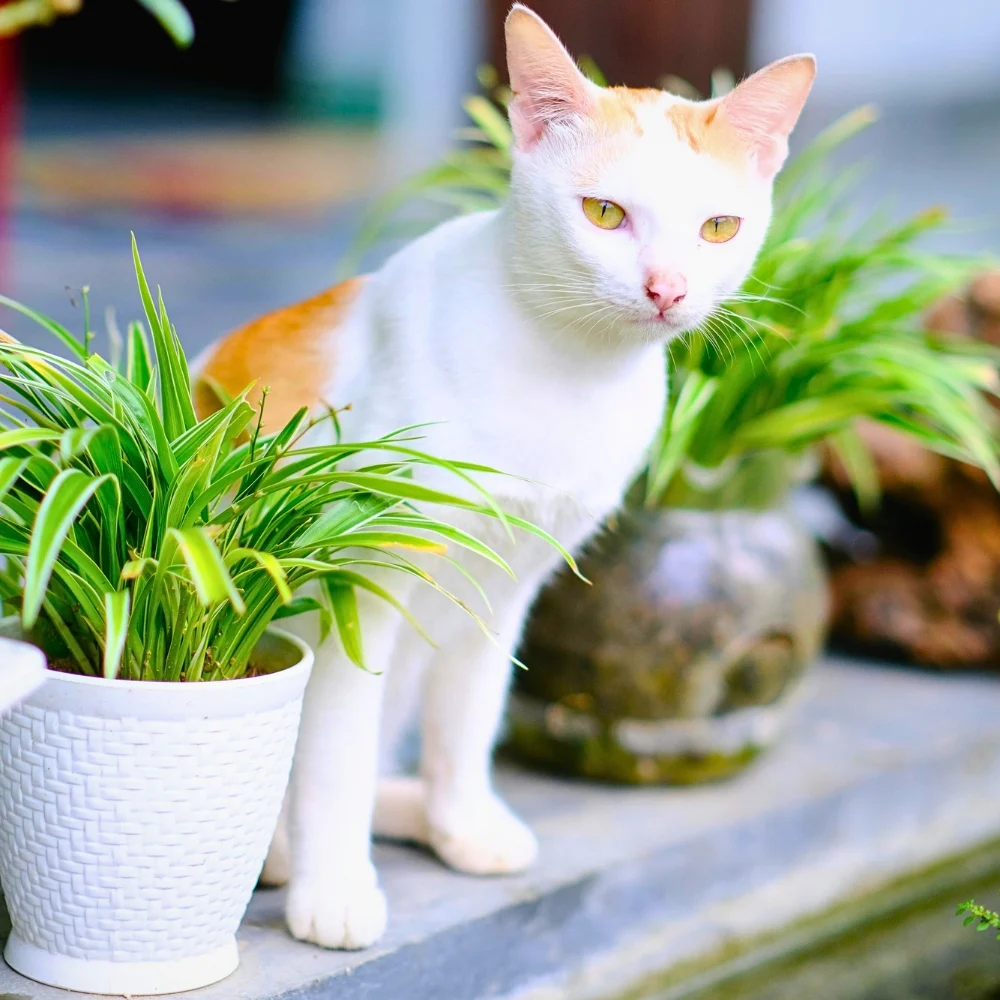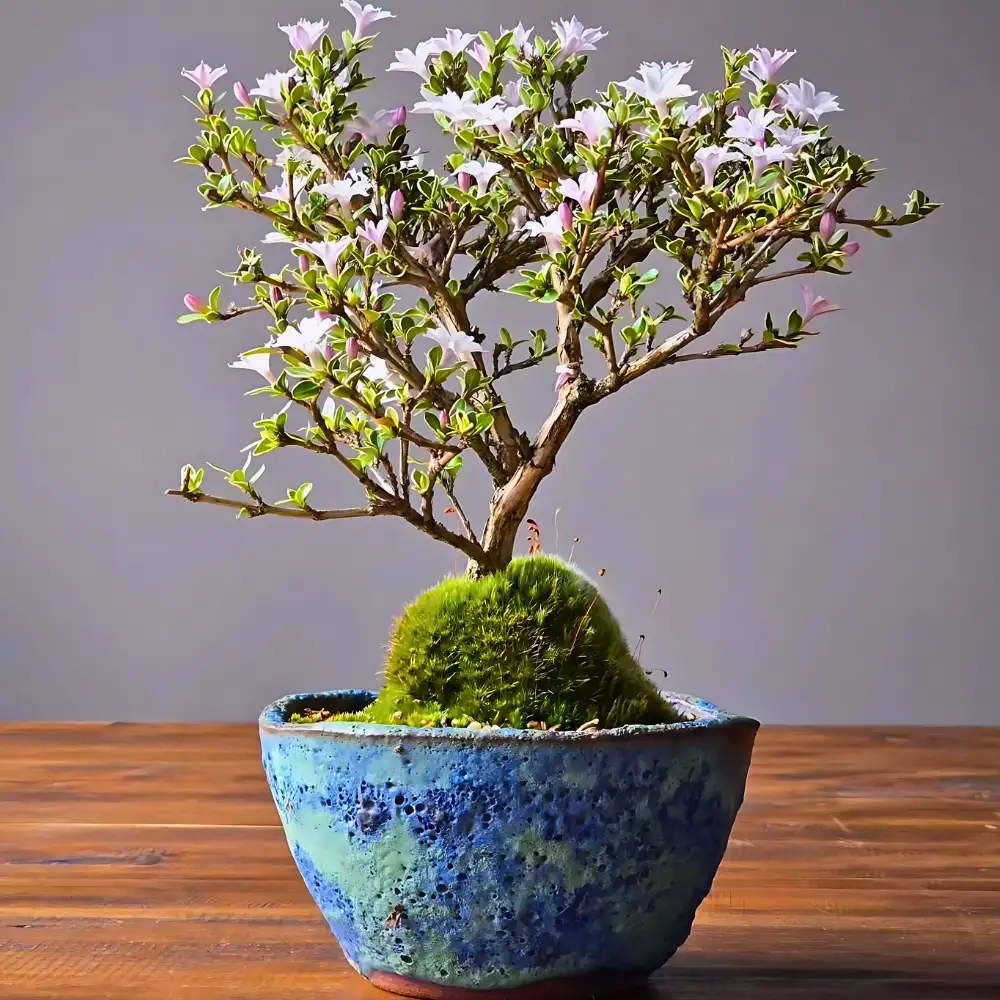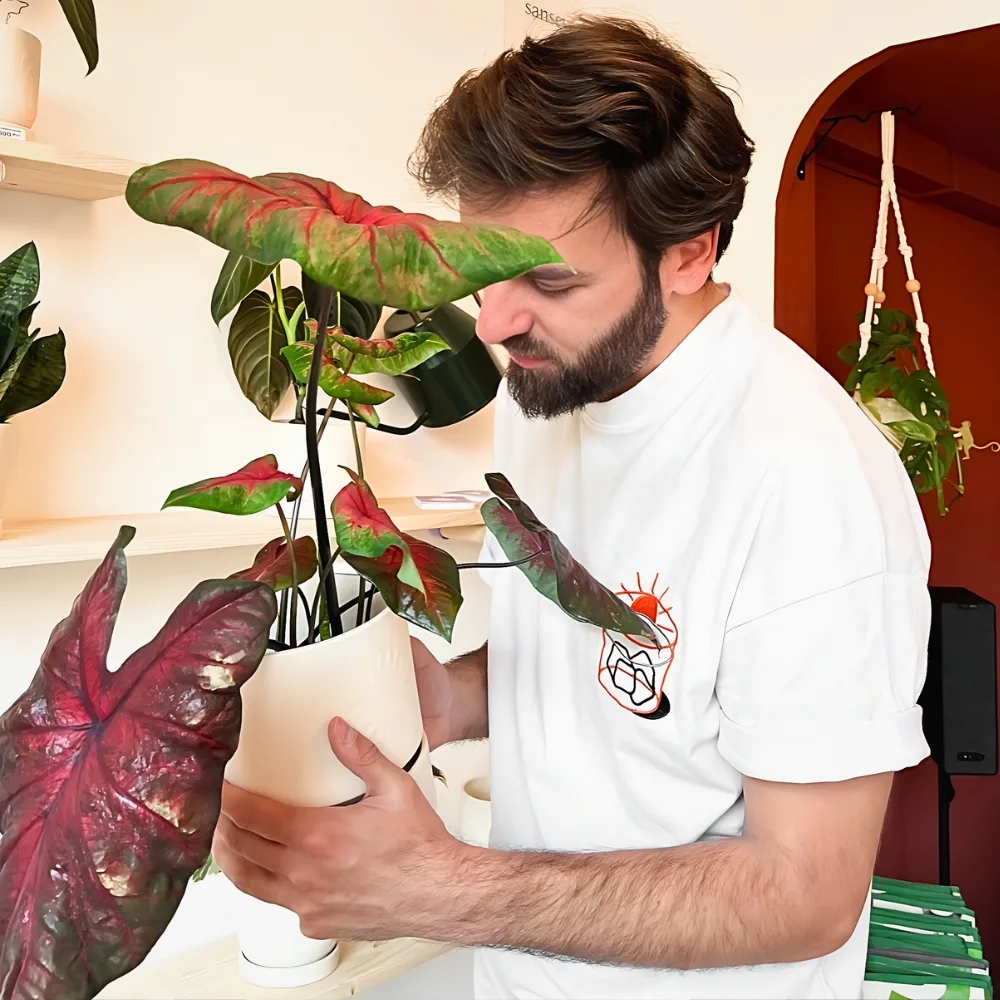When all else fails, buy a cactus, right? Even the biggest plant noob can take care of this hardy plant. Cacti are commonly found in dry, harsh desert environments, which makes them one of the very few plants that actually thrive on neglect. Thanks to their ability to store water, cacti can live for over a year without rain! But other than this, they offer unique advantages that make them perfect for indoor gardening enthusiasts of all experience levels. Their compact size and slow growth rate ensure they won't quickly outgrow their chosen locations, while their distinctive appearance adds visual interest to any space.
10 Cacti That Are Perfect for Your Plant Collection
Did you know that cacti are by far the most popular houseplants on Instagram? With almost 24 million cacti hashtags, the cactus easily takes the first spot on the list. No wonder, because they are not only great in your house or in a picture to post on your socials, but they are also relatively easy to care for. Here's a full guide on 10 of the best and most popular types of cacti that will look astonishing in your home plant collection.
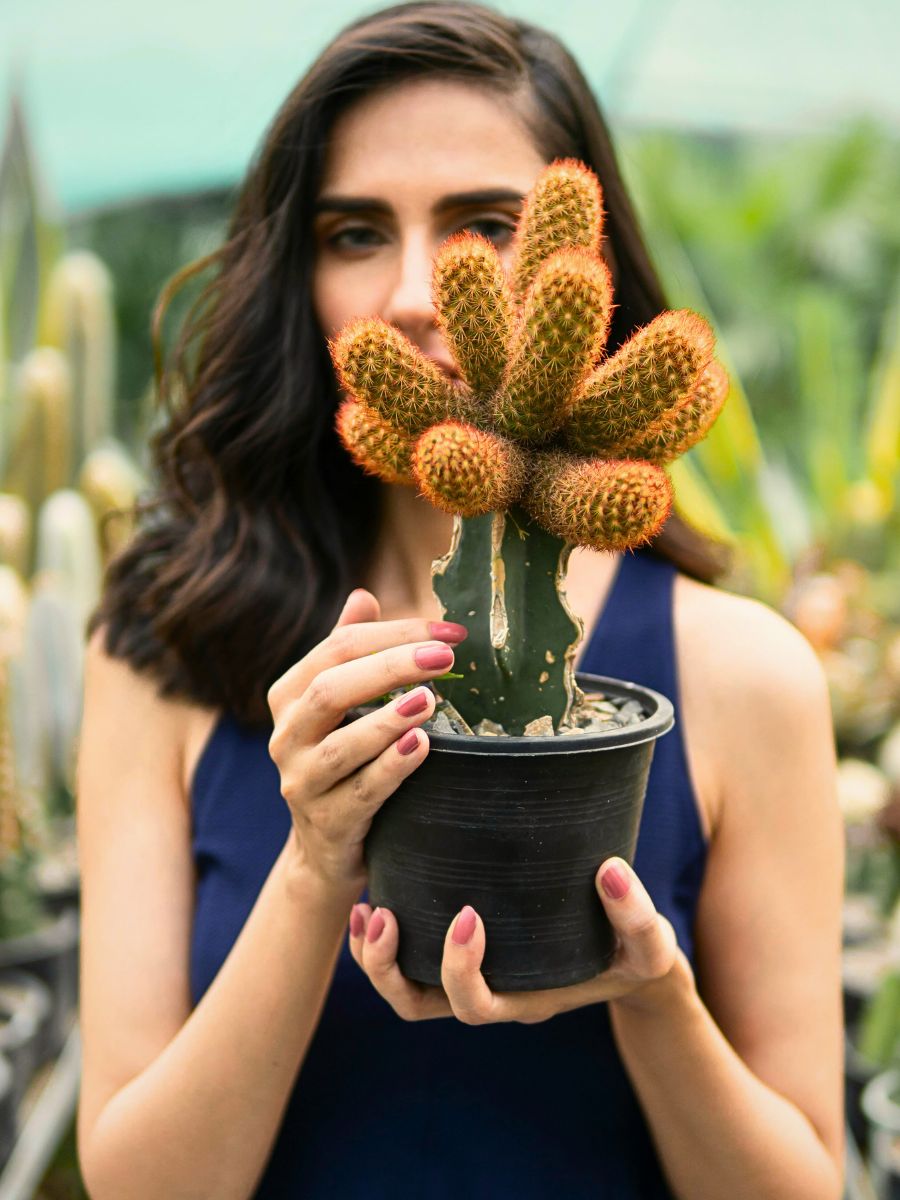
1. Moon Cactus (Gymnocalycium Mihanovichii)
Moon cacti are popular indoor plants known for their small size and vibrant colors. This type of cactus is native to South America’s deserts in Brazil, Argentina, and Paraguay. A member of the Cactaceae family, this succulent plant is also known by the common names ruby ball cactus, star-flowered cactus, and red cap. At maturity, the moon cactus is approximately one to two inches wide and has clusters of small, sharp spines.
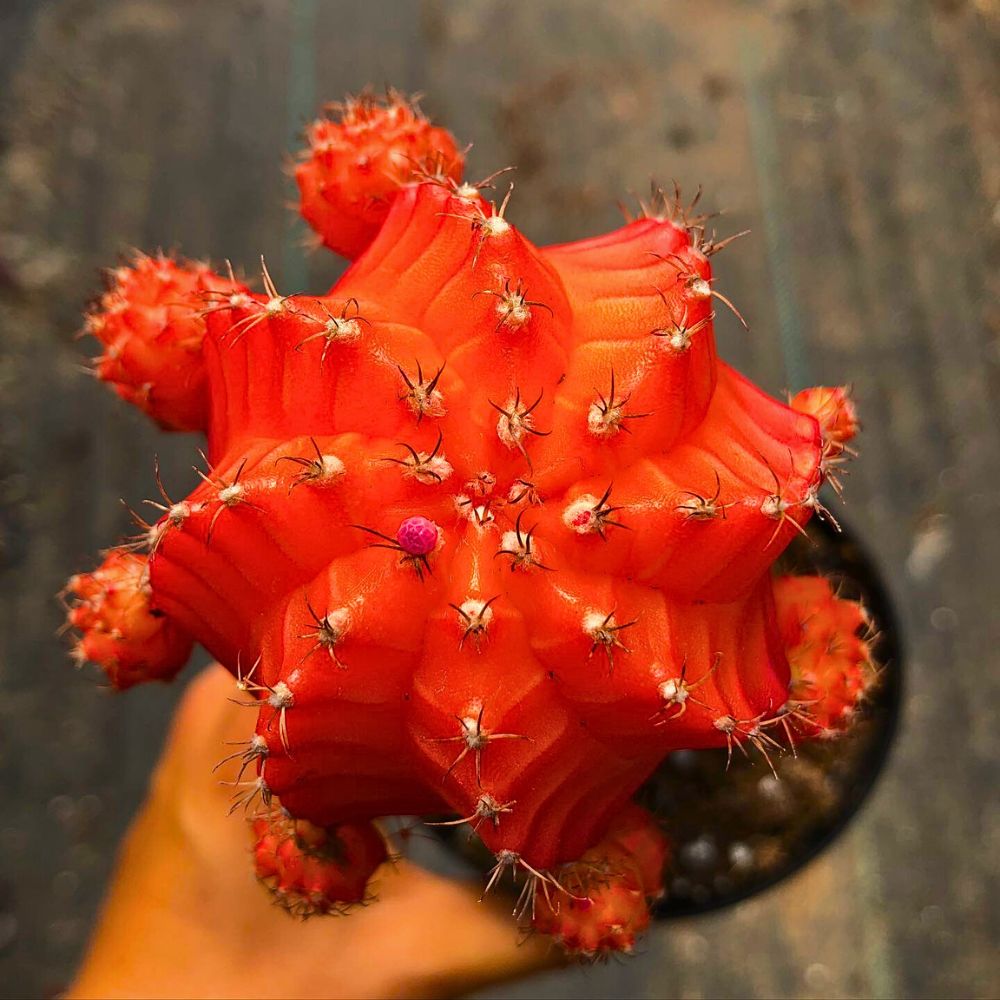
As houseplants, moon cacti are typically mutants that do not produce chlorophyll, which is why they have such vivid colors—from hot pink to neon yellow. Like many other cacti, the moon cactus does not require large amounts of water. To grow it successfully, just position your moon cactus near a window, but ensure that it only receives partial sunlight, as bright light can be damaging.
2. Bunny Ear Cactus (Opuntia Microdasys)
The bunny ear cactus is a popular houseplant that is not only attractive but is also low-maintenance. Native to Mexico, and also called Opuntia microdasys, it is known by several other common names, including angel’s wings cactus and polka dot cactus.
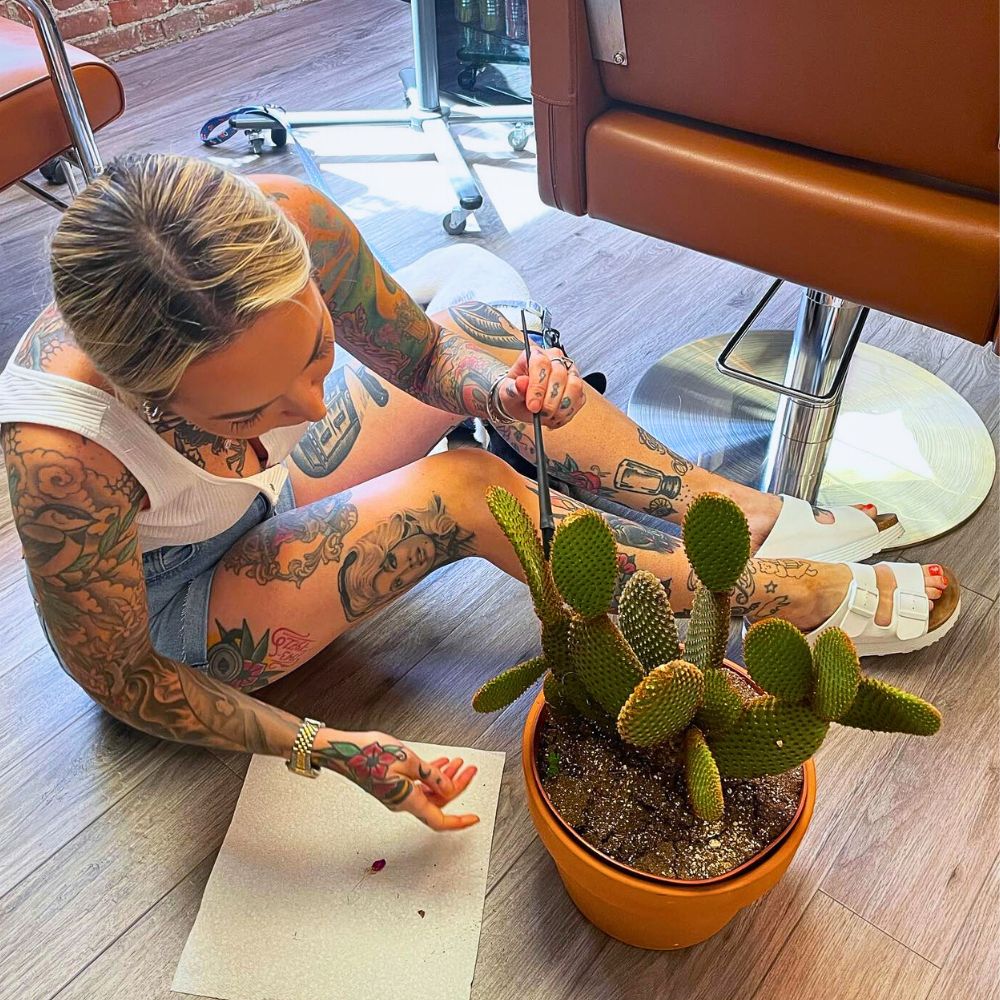
But don’t be fooled by these cute nicknames, while the bunny ear cactus might look less threatening than other cacti varieties with large and intimidating spikes, this cactus is just as prickly. Each white 'dot' on the surface of the bunny ear cactus is actually a glochid—a patch of hundreds of small spines that can easily lodge in the skin. Thus, take care when handling this cactus variety, and use protective gloves if necessary.
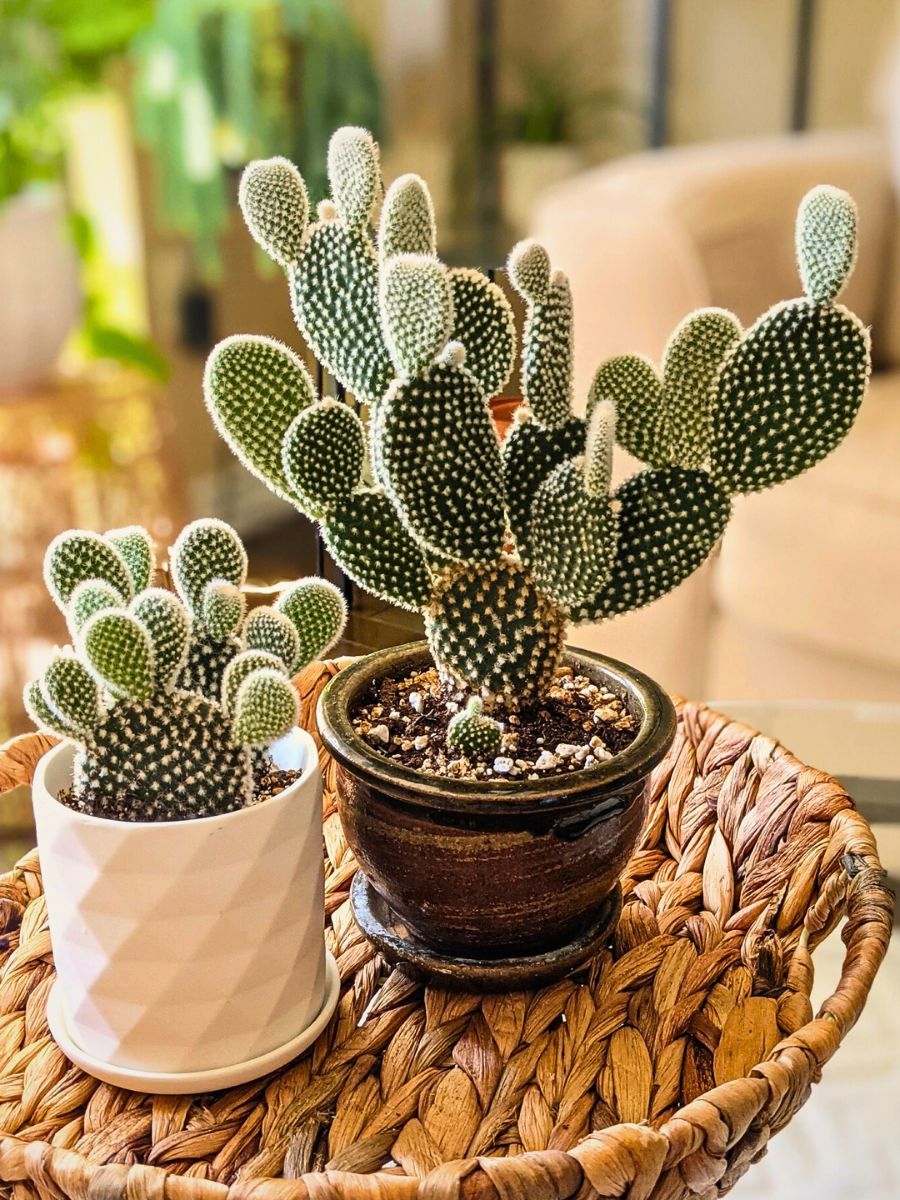
3. Ladyfinger Cactus (Mammillaria Elongata)
The Gold Ladyfinger cactus is native to central New Mexico. It consists of densely packed clusters of elongated oval stems, covered in harmless yellow or brown spines, and in spring, it produces white or yellow flowers. Perhaps it is called Ladyfinger cactus because it resembles somebody flipping a bird. Which is not ladylike! Otherwise, they thrive on a program of strong, bright light; slight water; and a steady diet of light fertilizer.
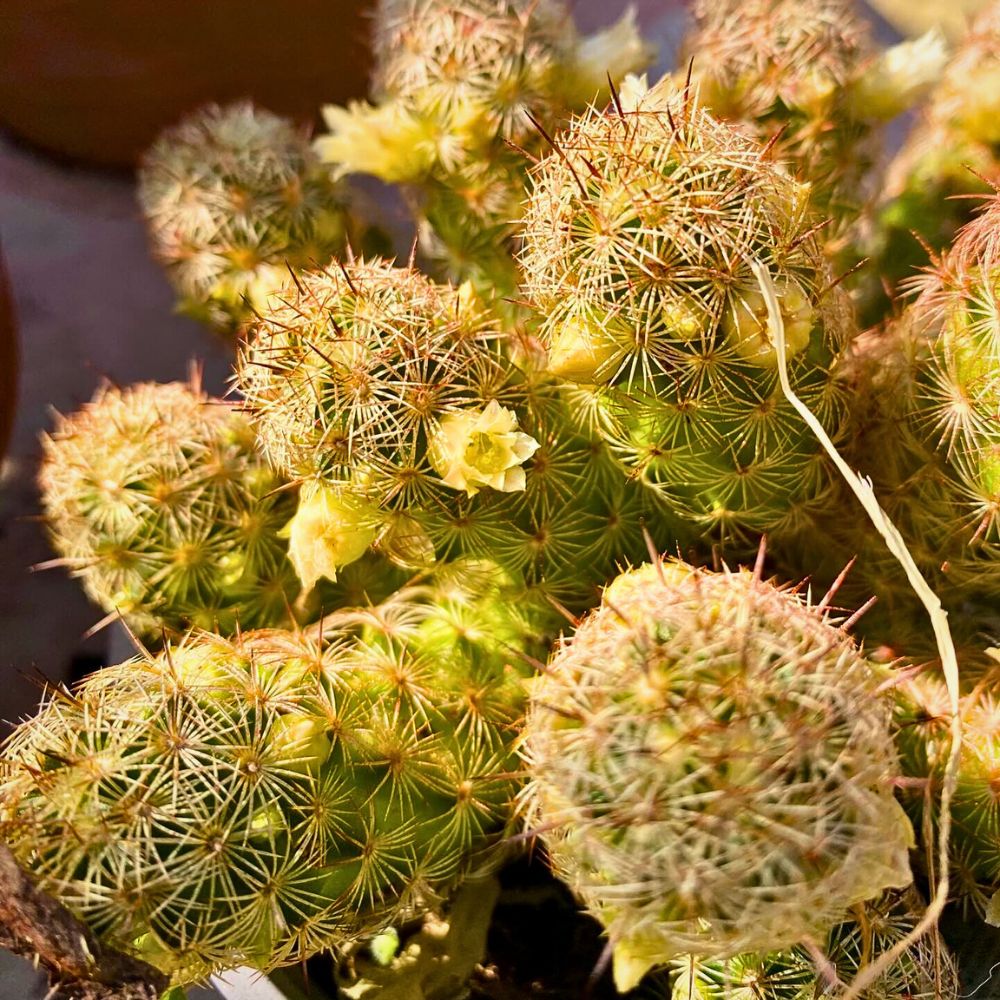
4. Rat Tail Cactus (Aporocactus Flagelliformis)
Rat tail cactus is a trailing cactus plant that sends out long stems with short, fine spines. The overall color of the plant is green when young, but the stems age to an almost beige color. Flowers are rare, but when they arrive, they are a glorious bright pink to red hue.
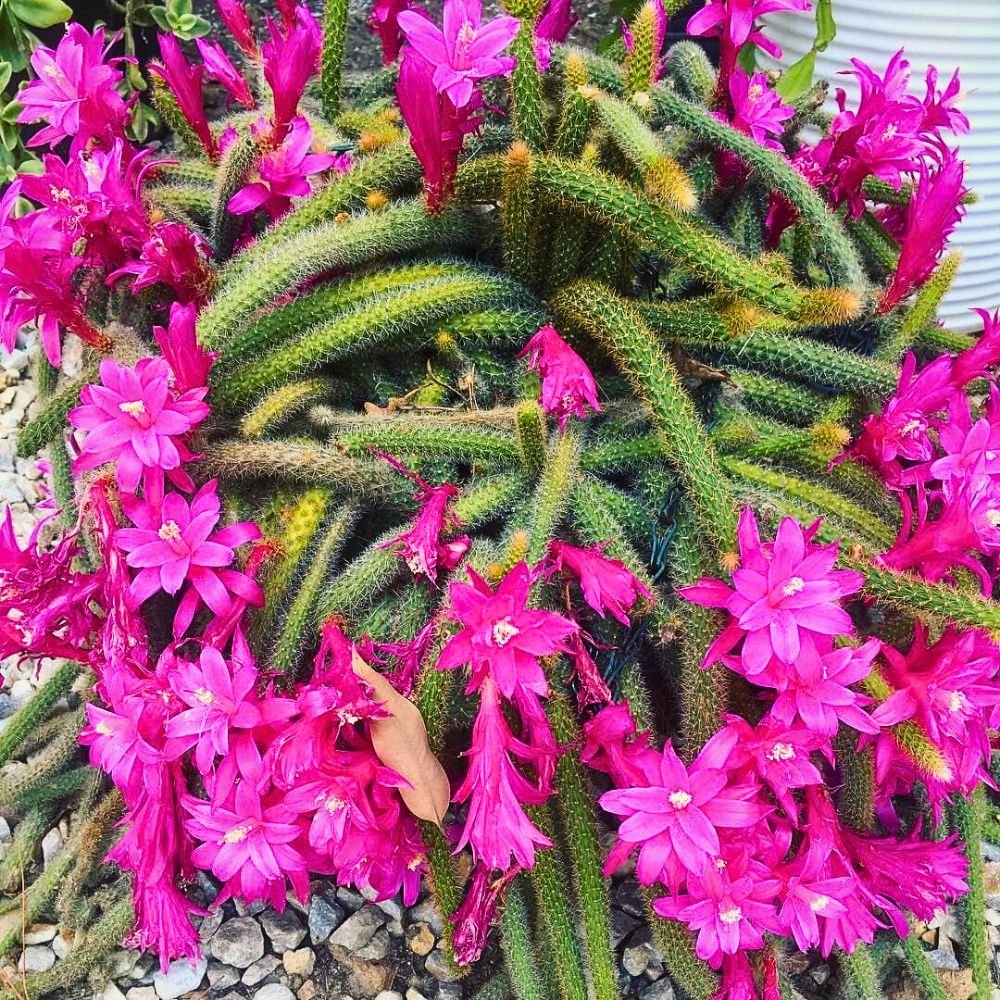
The rat tail cactus displays best when grown in a hanging basket. Line the container with sphagnum moss or other organic material before filling it with a potting mixture. This plant is drought-tolerant and can survive long periods with little care. If you repot it annually and give it lots of nutrients, it should produce pleasant pink blooms in spring.
5. African Milk Tree (Euphorbia Trigona)
Euphorbia Trigona, or the African Milk Tree as it's commonly known, is a highly architectural and curious type of cactus that will look great in your plant collection. Easy to look after, pest-resistant, and a fast grower, it makes the perfect specimen that adds interest to a sunny spot.
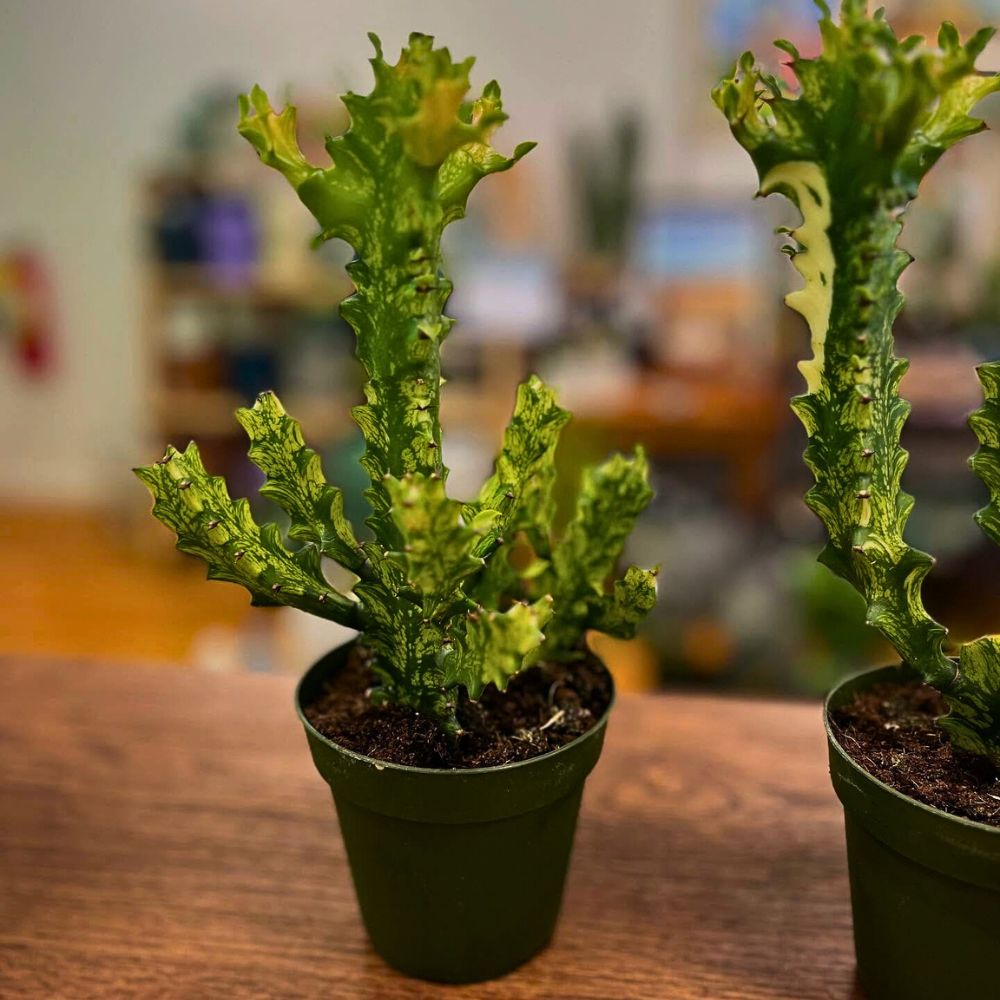
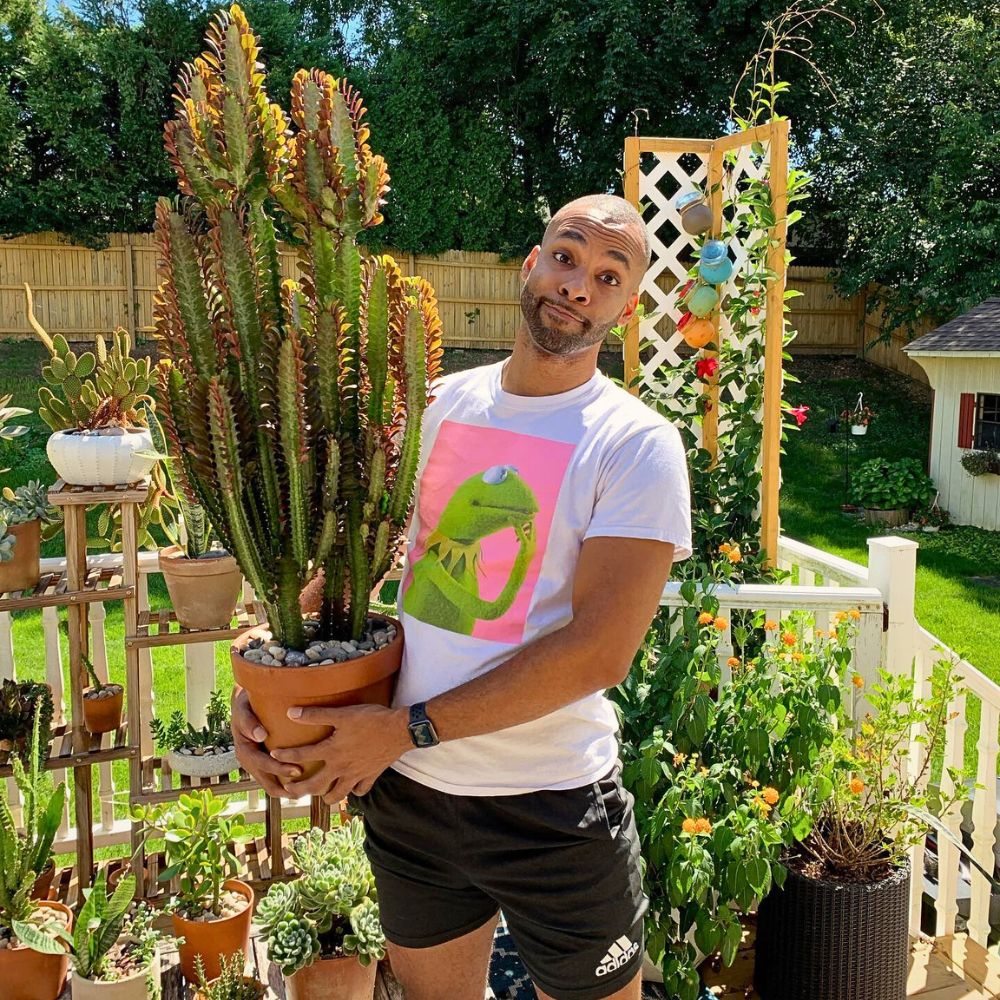
Like many in the Euphorbia genus, it's a mix between a cactus and a succulent plant, but has traits familiar with both. The leaves have a teardrop shape and tend to be present for only short periods, a growing season or two. If you provide poor care, then the leaves will be the first to drop off. However, even if you end up with a leafless stem, it's still a striking and handsome houseplant.
6. Fairy Castle Cactus (Acanthocereus Tetragonus)
The fairy castle cactus, also known by its scientific name Acanthocereus tetragonus, is a slow grower that can reach up to 1.8 meters (6 feet tall. Its other common names include night-blooming cereus, triangle cactus, and barbed-wire cactus. This columnar cactus plant is native to Central America, Mexico, northern South America, the Caribbean, and the southern United States. While the fairy castle cactus rarely blooms, it will sometimes produce large white or yellow flowers.
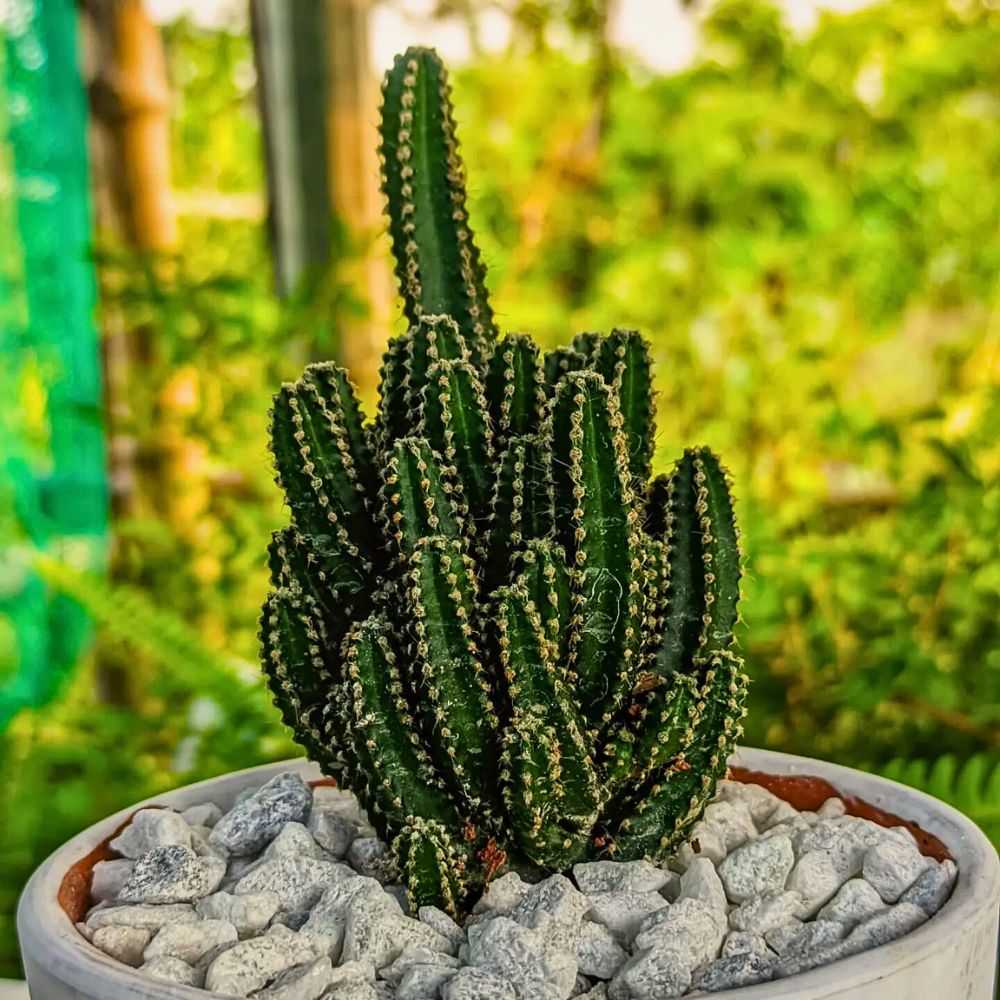
Fairy castle cacti kept as house plants should be grown in a space that receives lots of sunlight because if these plants do not receive enough light, the colors will fade and their columns will misshapen. This is a full-sun plant, but it will survive in partial shade.
7. Christmas Cactus (Schlumbergera Buckleyi)
The Christmas cactus is a very popular houseplant—and for good reason! When they bloom, they produce colorful, tubular flowers in pink or lilac colors. Their beautiful flowers, long bloom time, and easy care requirements make them a wonderful plant. We’ll bet someone in your family has a Christmas cactus!
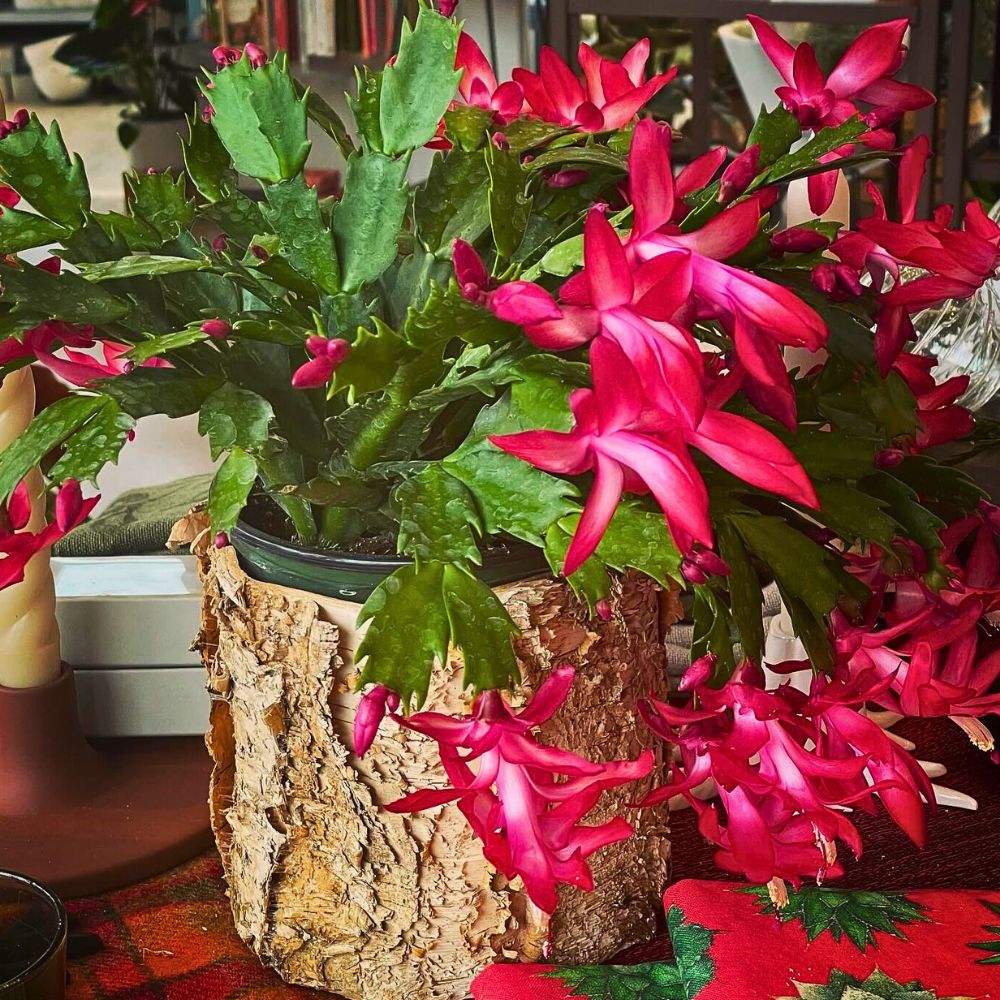
However, don’t treat a Christmas cactus like it’s a run-of-the-mill cactus or succulent. They require some care and affection. They can’t take the same sort of sunny, dry conditions that other cacti can. It’s important to water these cacti more regularly than most succulents, but also be cautious of keeping them too wet. If you want to know more about this very popular type of cactus, read the article 'Caring for Christmas Cactus - A Holiday Houseplant That Can Last for Years.
8. Thimble Cactus (Mammillaria Gracilis Fragilis)
Thimble Cactus is an otherwise low-maintenance and easy to care for. It makes a great indoor houseplant and is very rewarding to see bloom. Its care involves watering it only once the soil becomes dry; any pots should also have proper drainage. Well-draining soil should also be used, and remember that cactus mixes are good and often contain extra perlite and sand. This, for sure, is a type of cactus you would want to have around if you want to take your plant collection to the next level!
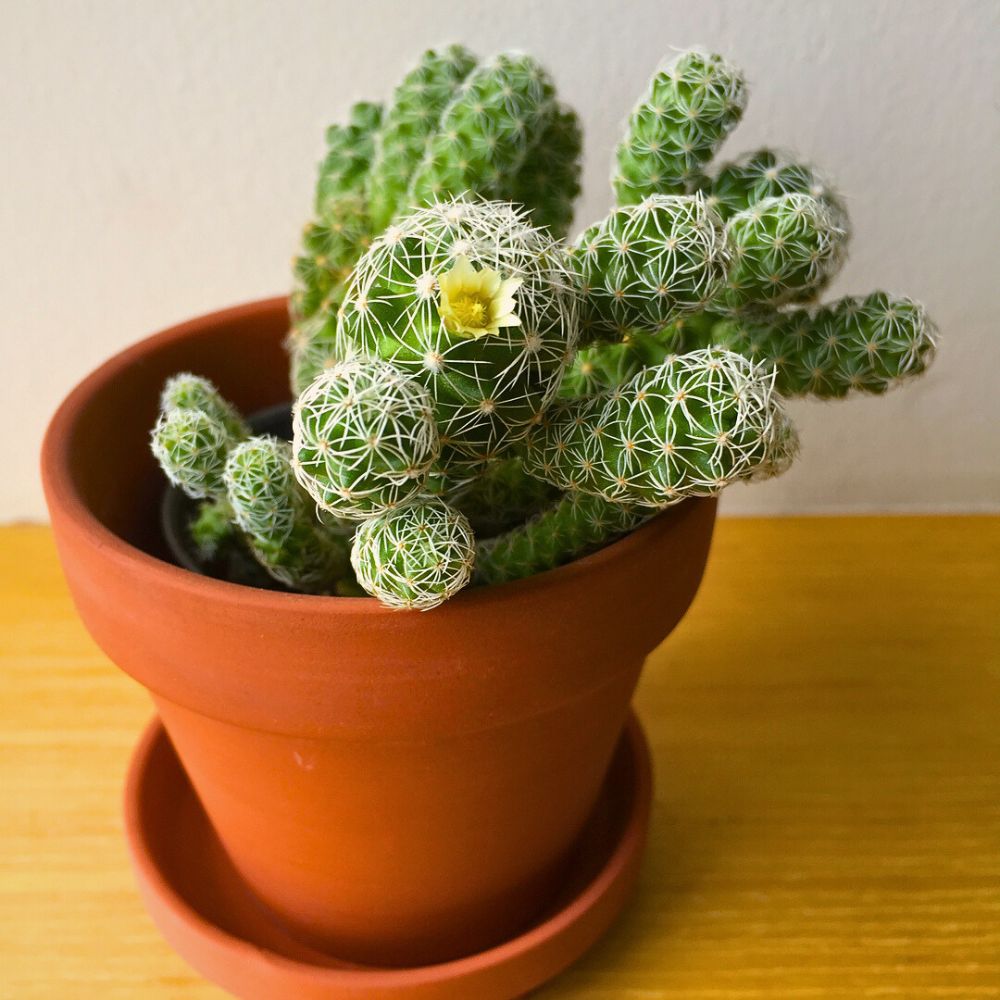
9. Mistletoe Cactus (Rhipsalis Baccifera)
Given that the mistletoe cactus is native to tropical and subtropical regions, it thrives in warm, humid conditions. For the most part, average household temperatures work well for the mistletoe cactus, which is why it is so popular as a houseplant. And the best part is its mistletoe appearance, perfect as a Christmas cactus as well. Check out another 10 Best Indoor Cactus Varieties and How to Care for Them.
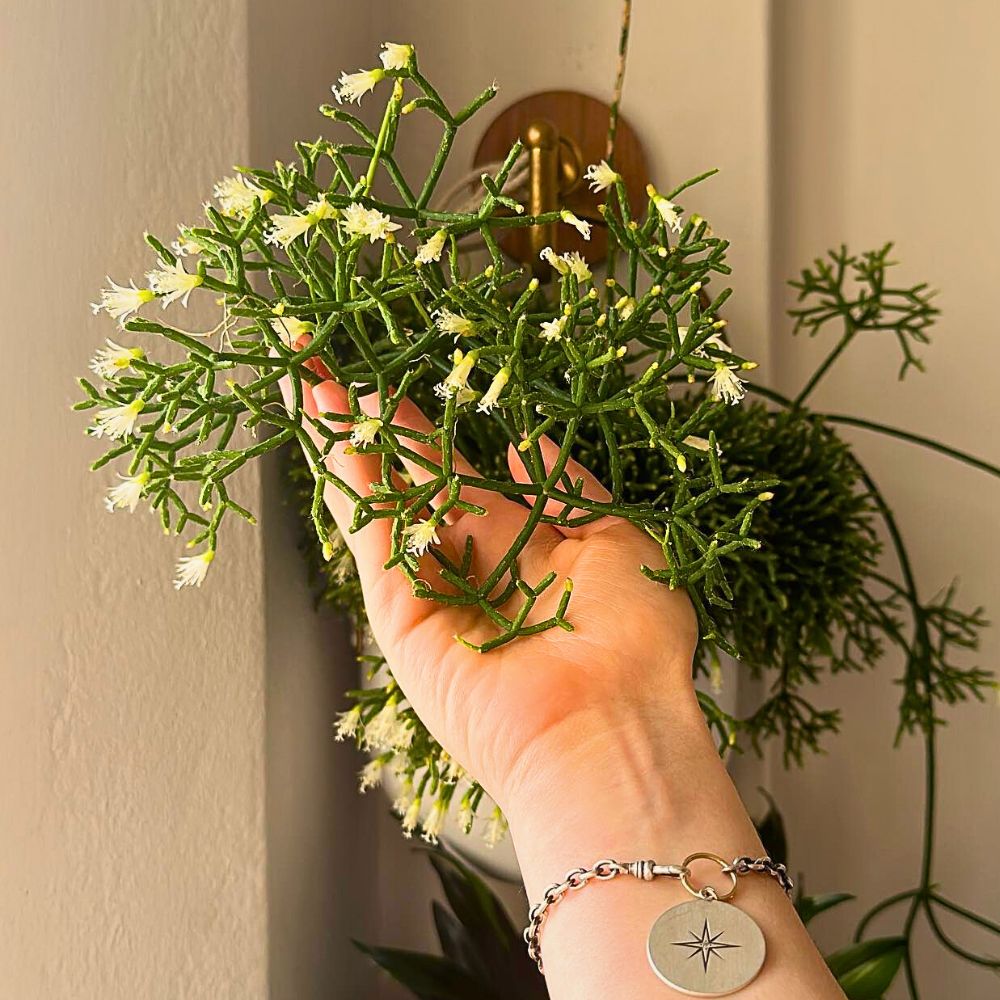
10. Feather Cactus (Mammillaria Plumosa)
The Feather cactus is native to Mexico and the American Southwest. Because of its distinctive appearance, this cactus has become a nearly threatened species over the years. However, it is still a frequent visitor to garden shows. Feather cactus is a low-maintenance plant, making it ideal for beginners looking for a beautiful, yet simple, start to their collection. It performs admirably in container gardens as well as on its own in an effective container. Feather cactus makes an excellent house plant when planted in a shallow dish, which quickly fills with clusters.
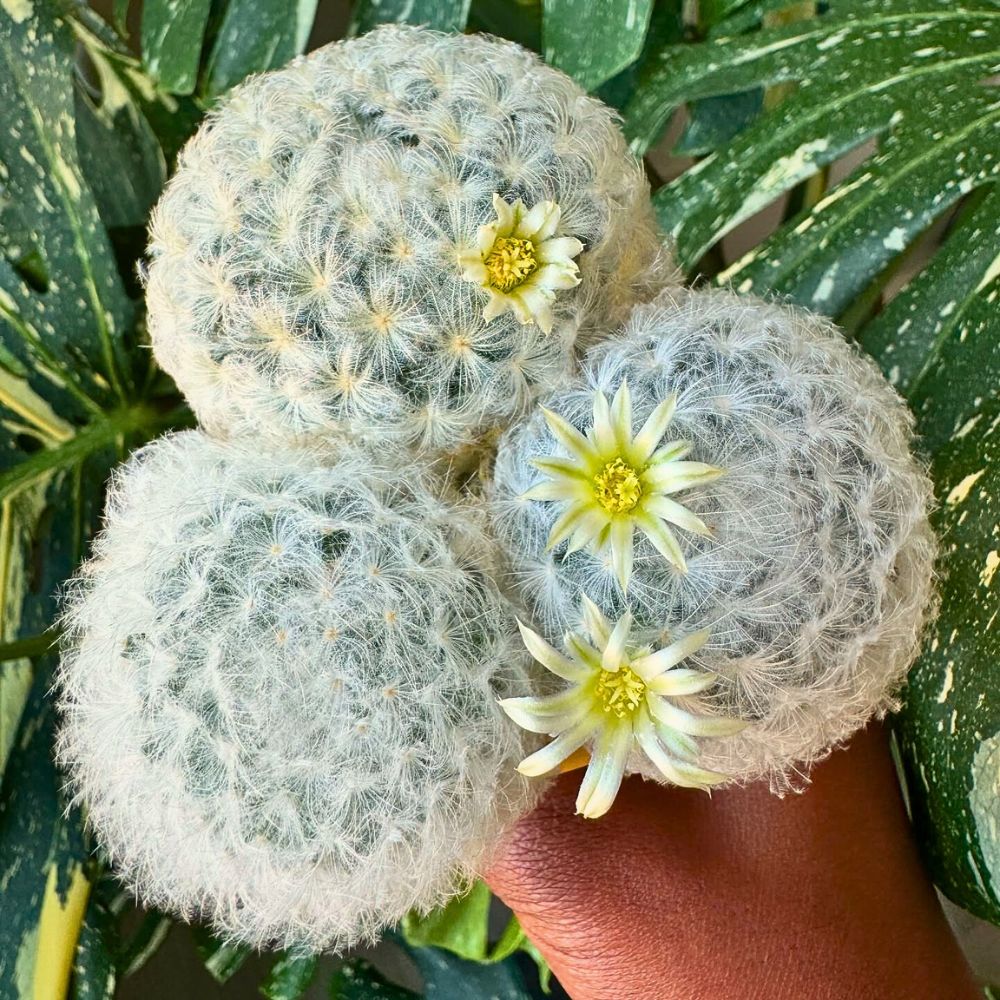
Cacti are indeed one of the best types of plants to have at home because of their low maintenance care needs, and they last a very long time. So, what other cacti do you think make a great plant collection for your indoor spaces?
Feature image by CACTUS PLANT HOME, header image by Juan Pablo Serrano.


